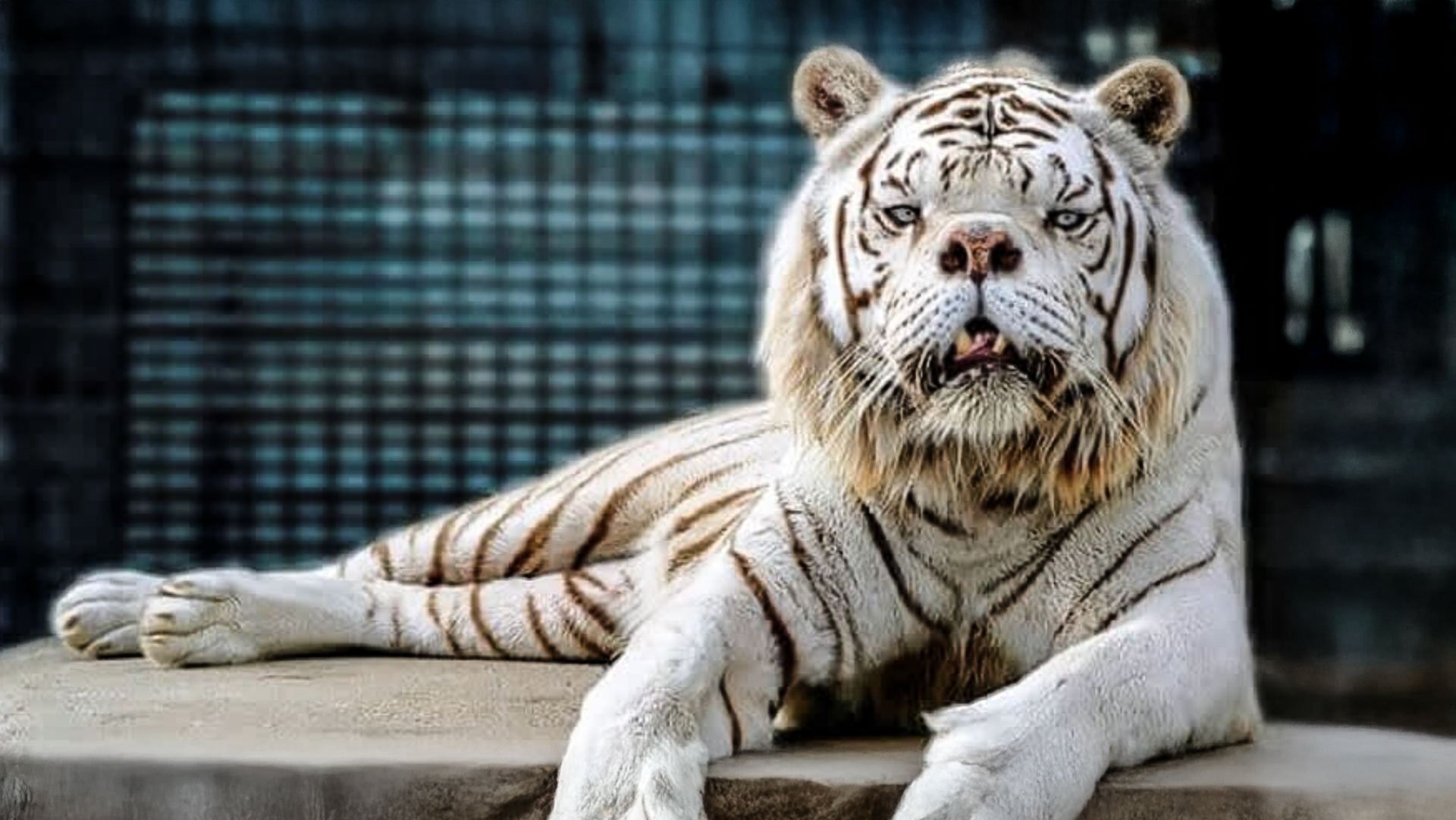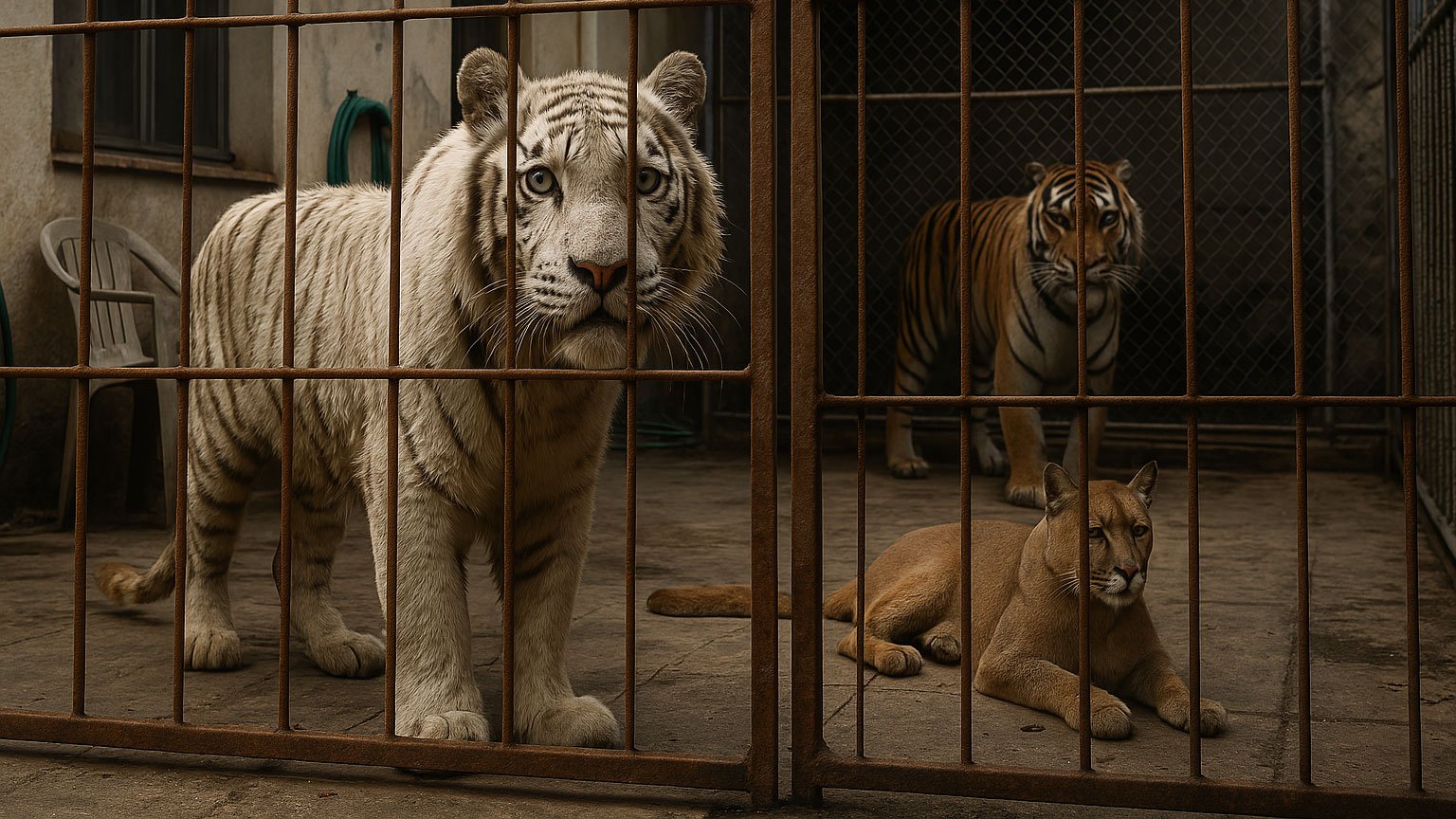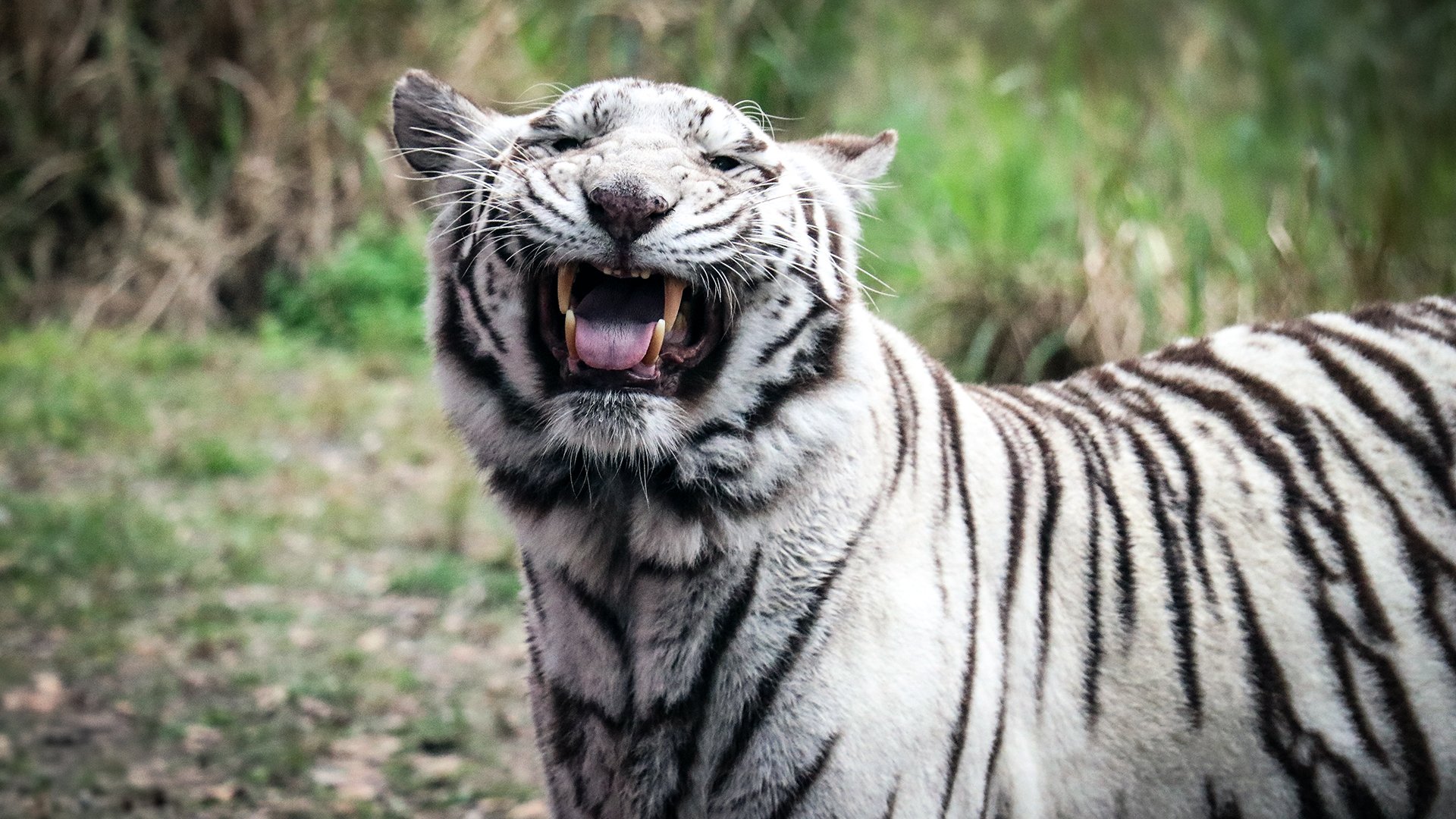Kenny the White Tiger: A Cautionary Tale of Greed and Genetic Tragedy
Kenny the White Tiger
In the heart of Arkansas in the early 2000s, a white tiger named Kenny became the face of an industry built on greed and human ignorance. Born in 1999 at a roadside zoo in Bentonville, Kenny was unlike the majestic white tigers people imagine gracing the jungles of India. Instead, his face was disfigured by a flattened nose, his jaw was misaligned, and his body was riddled with health problems—an innocent victim of a cruel and unethical breeding practice that continues to this day.
Kenny wasn’t a genetic anomaly. He was a product of intentional inbreeding, a practice that breeders use to satisfy the demand for white tigers—an unnatural curiosity that captivates the public. But the truth behind these mesmerizing animals is far more sinister than most realize.
The White Tiger Myth: Beauty at a Deadly Cost
White tigers are not a distinct species. They are Bengal tigers carrying a rare recessive gene that causes leucism—a condition that results in a lack of pigmentation, giving them their characteristic white coats. But what the public doesn’t often see is that breeding two tigers with this recessive gene significantly increases the risk of severe birth defects, stillbirths, and early deaths.
To maintain the white coat, breeders repeatedly inbreed tigers—often siblings, parents, or cousins—leading to a host of genetic defects. It’s estimated that only 1 in 30 white tiger cubs survives without major deformities. The others? They are euthanized, discarded, or hidden from the public eye.
Kenny’s flattened face and crossed eyes were just the tip of the iceberg. Many white tigers born through these unethical breeding programs suffer from scoliosis, cleft palates, hip dysplasia, and immune deficiencies. And yet, zoos and private breeders continue to perpetuate the myth that white tigers are rare and endangered to lure paying crowds.
Kenny: A Life Marked by Exploitation
Kenny’s life was a tragedy from the start. Born to a breeder who was fixated on producing white tigers for profit, he was one of the unlucky survivors in a litter plagued with deformities. His brother, Willie, born alongside him, was also a victim—mentally impaired and suffering from a host of health issues.
Kenny and Willie were eventually rescued by Turpentine Creek Wildlife Refuge, a true sanctuary that provided them a safe haven where they could live out their lives free from exploitation. But Kenny’s story brought global attention to the horrors of breeding for aesthetics over ethics.
Kenny passed away in 2008 at the age of 10, a relatively short life span for a non inbred tiger, but a long time for a white tiger. While his life was short, his legacy continues to shine a light on the cruel realities behind the white tiger industry.
Why Big Cat Rescue Fought to End the White Tiger Industry
Big Cat Rescue has long been at the forefront of exposing the cruel realities behind breeding white tigers. As one of the most prominent voices advocating for wildcat conservation, Big Cat Rescue spent years educating the public about the dangers of inbreeding and the unethical practices that perpetuate the myth of the white tiger.
The organization made it clear that no legitimate breeding program for white tigers exists. Every white tiger born in captivity in the United States today is the result of generations of inbreeding—an act that has no place in ethical conservation.
Big Cat Rescue fought tirelessly to dispel the myth that white tigers are a separate subspecies or a species that needs conservation. In reality, breeding them in captivity does nothing to save wild tiger populations, which continue to face threats of habitat destruction and poaching.
The Big Cat Public Safety Act: Ending Cruelty One Law at a Time
Thanks in part to years of advocacy and education by Big Cat Rescue and its supporters, the Big Cat Public Safety Act (BCPSA) was signed into law on December 20, 2022. This groundbreaking legislation banned the private ownership of big cats and ended public contact with cubs, effectively shutting down the pipeline of exploitation that fueled the demand for white tiger cubs.
Without the ability to profit from cub petting and photo ops, many unscrupulous breeders have been forced to shut down. But the fight is far from over. The legacy of Kenny serves as a stark reminder that laws need to be enforced, and the public must remain vigilant against those who would put profit over the welfare of animals.
How You Can Make a Difference
Kenny’s tragic story should never be repeated, and you can be part of ensuring it doesn’t. Here’s how:
Support True Sanctuaries: Only visit sanctuaries accredited by the Global Federation of Animal Sanctuaries (GFAS) that do not breed or exploit their animals for entertainment.
Speak Out Against Inbreeding: Educate others about the harmful practices behind breeding white tigers and the myths perpetuated by zoos and private breeders.
Advocate for Stronger Protections: Continue to support legislation that strengthens protections for big cats and wild animals.
A Legacy of Awareness and Action
Kenny’s life was filled with pain, but his story continues to serve as a powerful call to action. His face, once the poster child of inbreeding gone wrong, is now a symbol of the fight to end cruelty in the name of profit.
Big Cat Rescue’s work has shifted from operating a physical sanctuary to funding conservation efforts in the wild. By supporting legitimate conservation work and educating the public about the realities of animal exploitation, we can ensure that no more animals suffer the fate of Kenny.
Read more: https://www.aol.com/most-unfairly-designed-animals-nature-143042783.html






